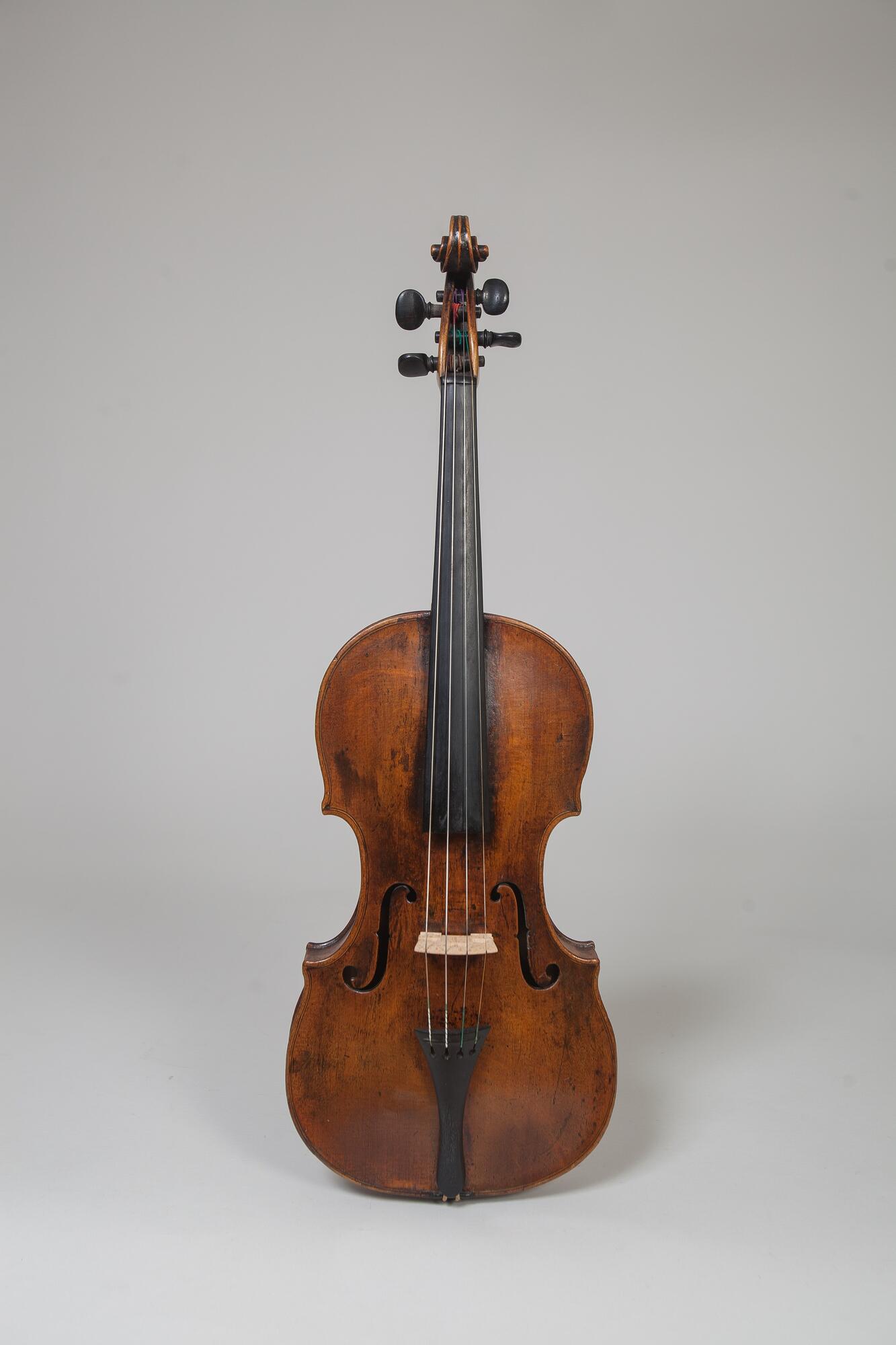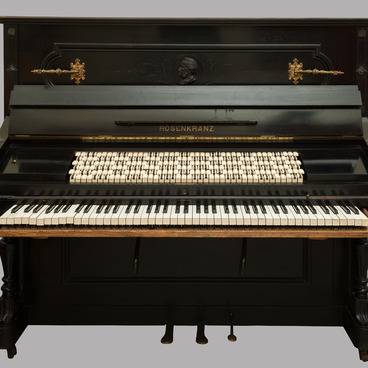Violin that belonged to a great Russian composer Mikhail Glinka, was created in 1766 by Sebastian Anton Klotz (1696‒after 1767), a representative of famous Tyrolean violin makers’ dynasty, as evidenced by an authentic label: “Sebastian Klotz in Mittenwald. An. 1766”. We know that Glinka mastered playing the violin since childhood, he played it among his friends and during festivals in the village of Novospasskoye.
A label “Violin of Mikhail Ivanovich Glinka belongs to the Konyushen[ny] choir. 1857” indicates the fact that this instrument really belonged to the composer. The violin was presented by L. Shestakova, the musician’s sister, to the church choir after the memorial service for the deceased composer in the Konyushennaya church. On April 26, 1902, the manager of the Court Stables in St. Petersburg gave this instrument to Baron K. Stackelberg, a founder of Museum’s Court Orchestra. Thus, the violin joined the Museum’s collection of ancient musical instruments.
Glinka’s violin absorbed all the best qualities of Klotz' instruments: you can endlessly admire beauty, quality and timber classic simplicity (spruce and maple) at the same time, admire body proportions, contours of f-holes, volute, soft and slightly oily glow of the varnish. The instrument radiates amazing calmness and tranquility. The violin’s sound is noble, penetrating into your soul, and it does not pretend to conquer big halls.
A label “Violin of Mikhail Ivanovich Glinka belongs to the Konyushen[ny] choir. 1857” indicates the fact that this instrument really belonged to the composer. The violin was presented by L. Shestakova, the musician’s sister, to the church choir after the memorial service for the deceased composer in the Konyushennaya church. On April 26, 1902, the manager of the Court Stables in St. Petersburg gave this instrument to Baron K. Stackelberg, a founder of Museum’s Court Orchestra. Thus, the violin joined the Museum’s collection of ancient musical instruments.
Glinka’s violin absorbed all the best qualities of Klotz' instruments: you can endlessly admire beauty, quality and timber classic simplicity (spruce and maple) at the same time, admire body proportions, contours of f-holes, volute, soft and slightly oily glow of the varnish. The instrument radiates amazing calmness and tranquility. The violin’s sound is noble, penetrating into your soul, and it does not pretend to conquer big halls.


